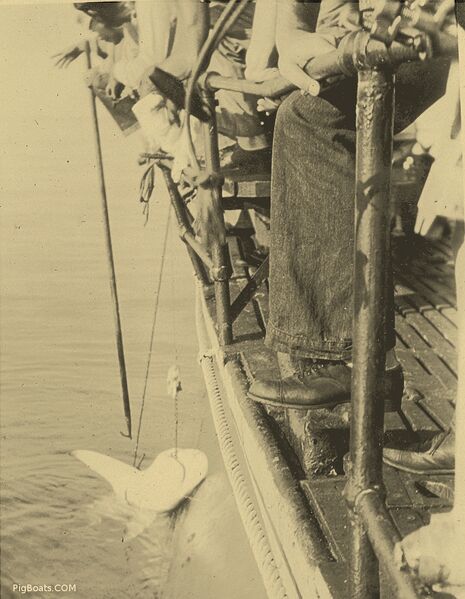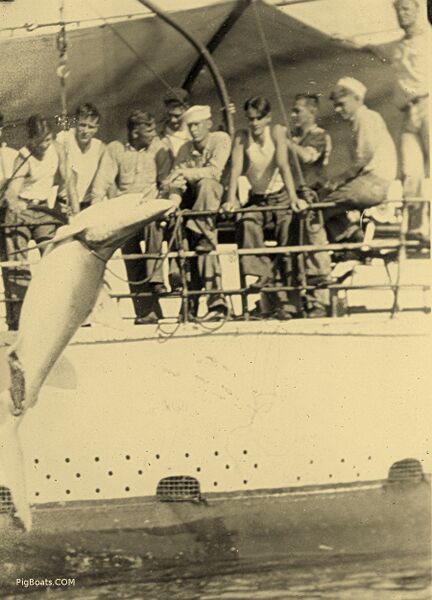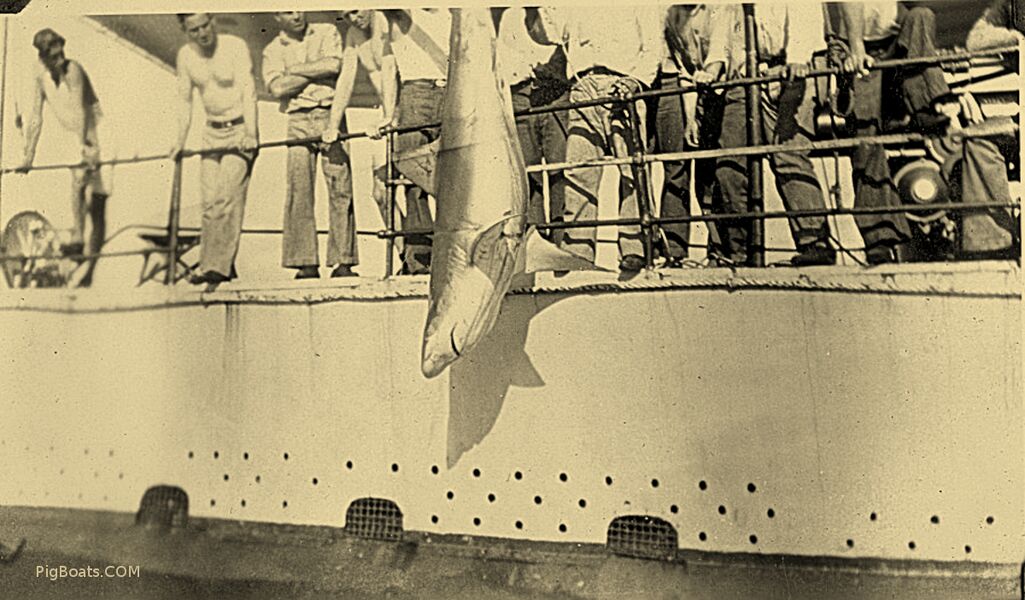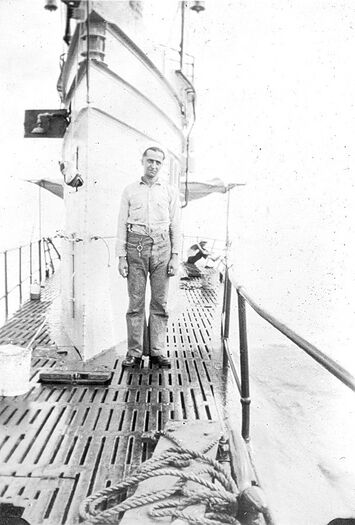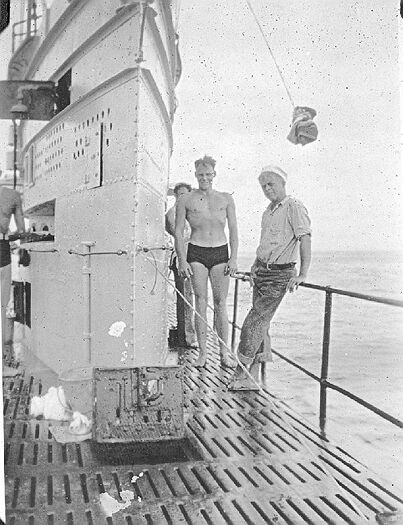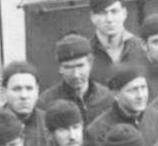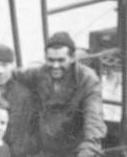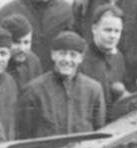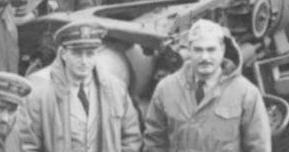S-42

Photo in the private collection of Ric Hedman. NOT a Navy photo.

Photo in the private collection of Ric Hedman. NOT a Navy photo.
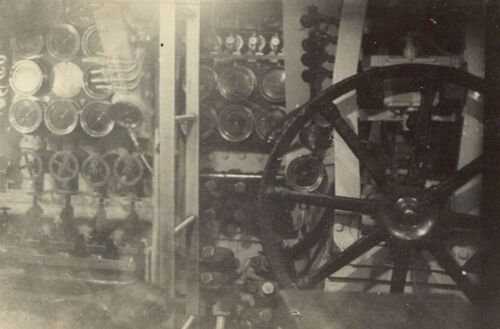
Photo courtesy of crew member John Allen, used with permission.
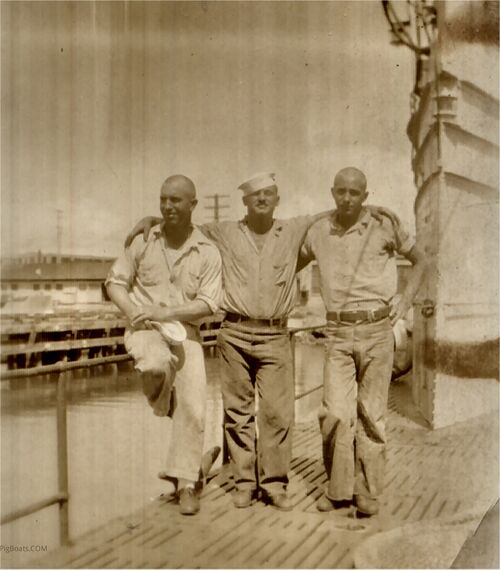
In the photo you can see two of the men, Nessin and the scrapbook owner, wearing their belt buckles off to the side. Though this could be a fashion statement it has probably a more practical nature. Working around moving and rotating machinery or open breaker panel electrical circuits caused men to be more cautious about metal-to-metal contacts.
Photo in the private collection of Ric Hedman. NOT a Navy photo.
What looks like a rope at the deck edge is actually a tow cable that these early submarines had permanently affixed. It was run through the bullnose at the bow and then attached to the portside of the hull at deck level. We now know that the shark was caught on the port side of the submarine.
These photos were taken from the S-42's small boat that would have used the davit to lift it from its storage locker under the walking deck.
Photos in the private collection of Ric Hedman. NOT Navy photos.
Photos in the private collection of Ric Hedman. NOT to be used without permission.
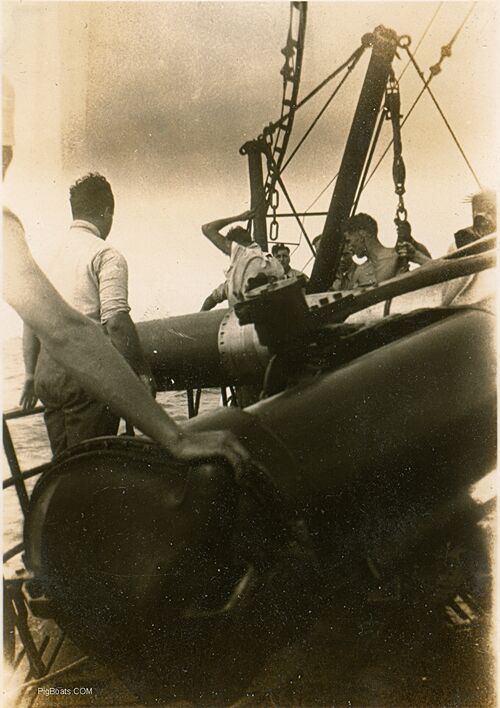
Photo in the private collection of Ric Hedman. NOT a Navy photo.

Photo in the private collection of Ric Hedman.
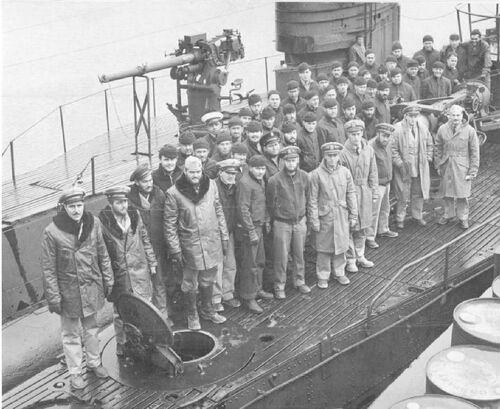
Photo courtesy of crewmember John Allen. Used with permission.
-
Center, John Allen
-
Center, QM3 Miller
-
"Shorty" Howe
-
Center, The ship's cook
-
Left, LCDR Charles F. Leigh, right LCDR Harley K. Nauman
Photos courtesy of crewmember John Allen. Used with permission.
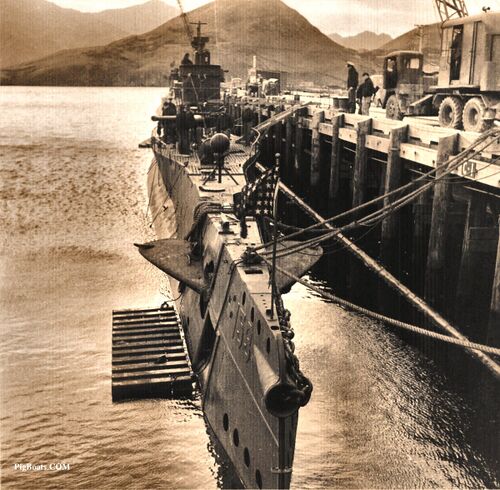
A bow view of S-42 at Dutch Harbor, Alaska, approximately 1943. Her hull number is still present on her bow, but it has been painted over in flat black. This was to prevent her from being identified if spotted by the Japanese. The rounded covers over the pivots for the bow planes have been removed, likely due to a corrosion problem. The bow planes are partially rigged out.
Photo in the private collection of Ric Hedman.

Photo courtesy of crewmember John Allen. Used with permission.
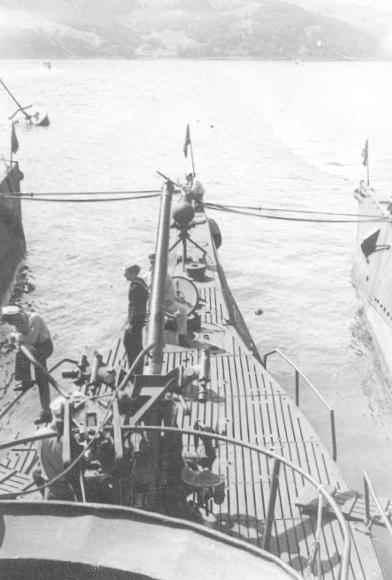
Photo courtesy of crewmember John Allen. Used with permission.
Page created by:
Ric Hedman & David Johnston
1999 - 2023 - PigBoats.COM©
Mountlake Terrace, WA, Norfolk, VA
webmaster at pigboats dot com

